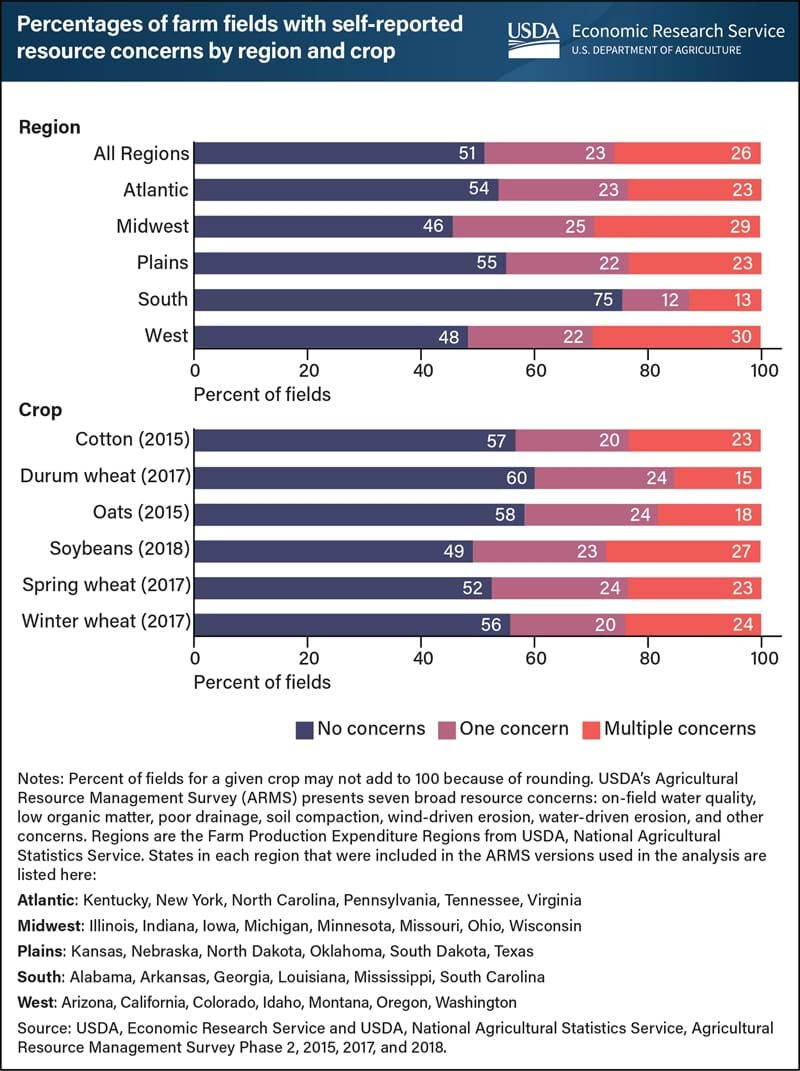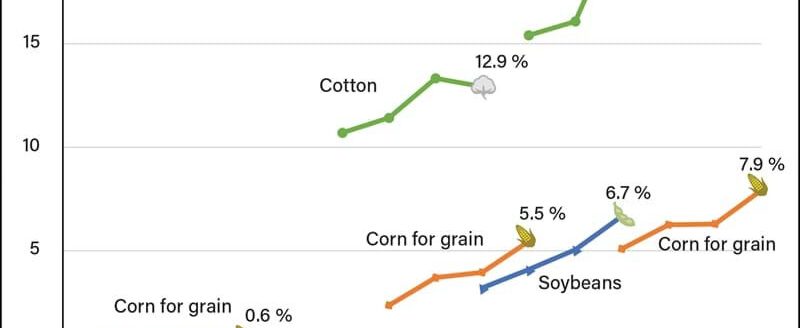Farmer-reported soil and water concerns vary by crop type and region

When management practices degrade a natural resource used in farming to the degree that its sustainability or intended use is impaired, then a given land unit is said to have a resource concern. The Natural Resources Conservation Service has identified 47 specific resource concerns affecting crop fields in the United States.
ERS researchers classified the soil and water resource concerns from this list into seven broad categories in USDA’s Agricultural Resource Management Survey. These seven broad concerns are on-field water quality, low organic matter, poor drainage, soil compaction, wind-driven erosion, water-driven erosion, and other concerns.
Cotton, wheat, oat, and soybean farmers were asked to report if they were experiencing one or multiple of the seven categories of concerns on the fields surveyed by ARMS between 2015 and 2018. Overall, farmers represented across these surveys reported that 49% of their fields had at least one resource concern and 26% of their fields had two or more concerns. The percentages of fields with at least one self-reported resource concern varied by region.
Resource concerns were most common in the Midwest, the largest region by the number of fields, and were least common in the South. Farmers growing soybeans reported that about 51% of their fields have one or multiple resource concerns.
Farmers growing durum wheat, which covers 2% to 5% of the total wheat area in the country, reported one or more resource concerns on about 40% of fields. This chart is drawn from the USDA, Economic Research Service report “USDA Conservation Technical Assistance and Within-Field Resource Concerns,” published May 2022.



